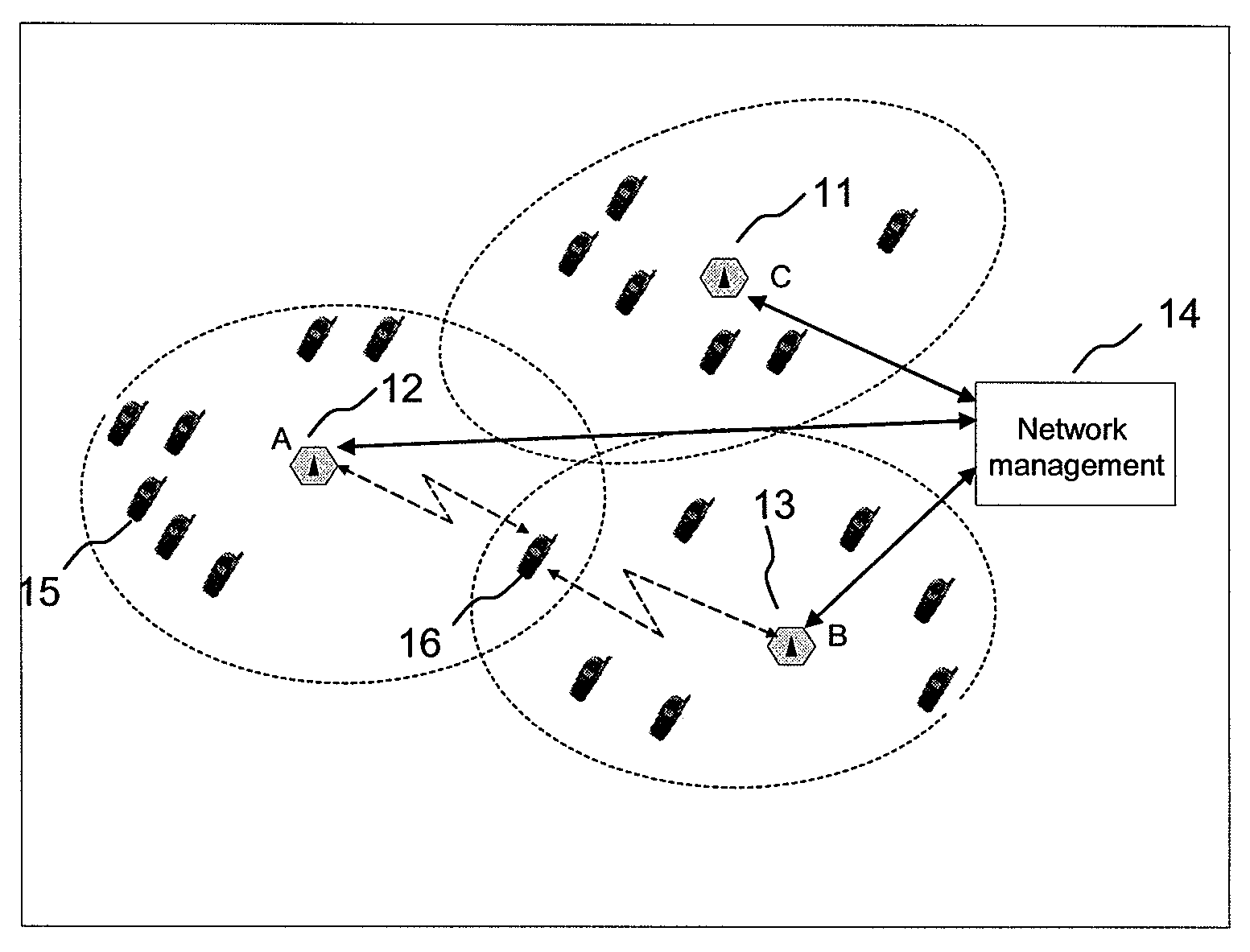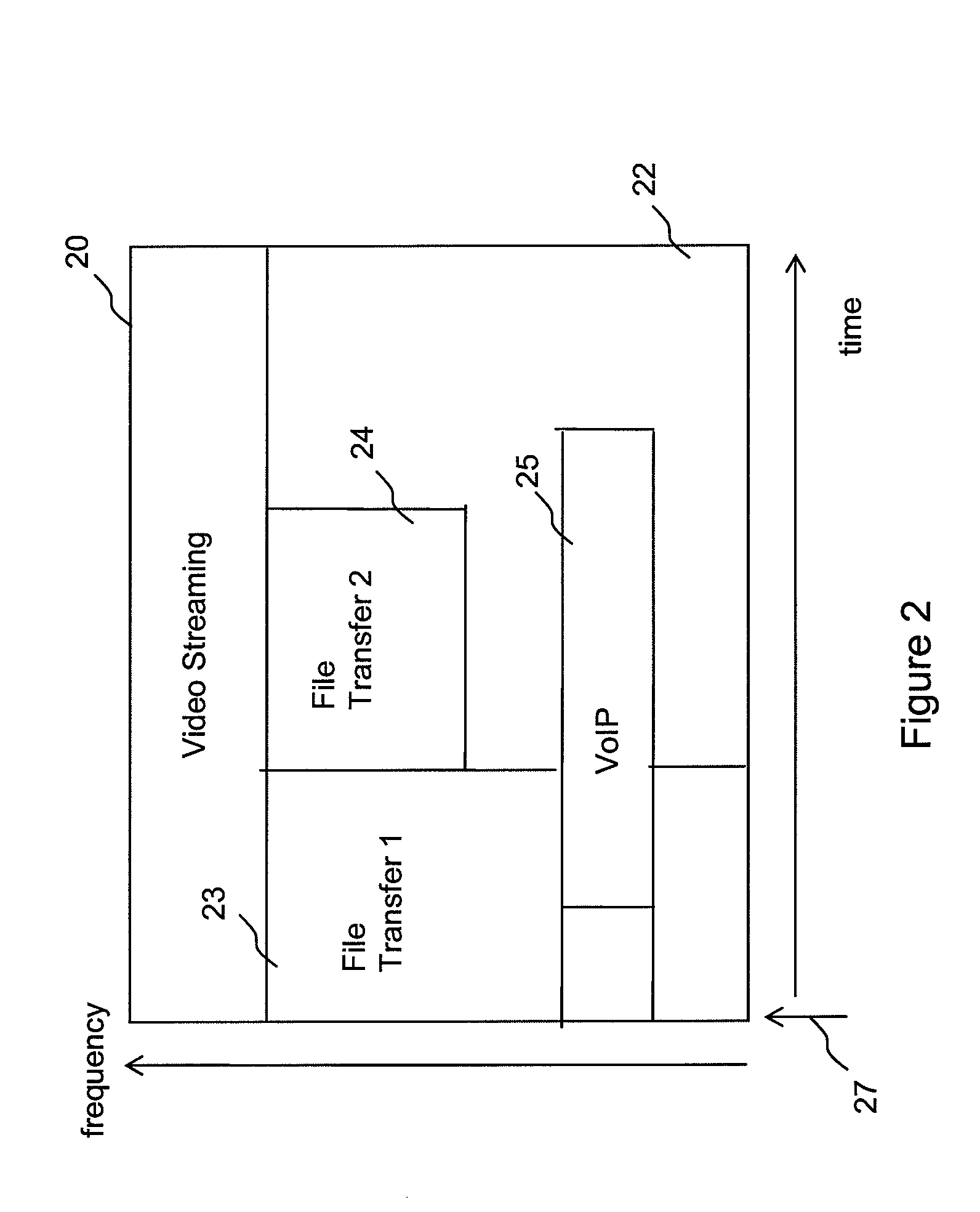Capacity Optimisation in a Cellular Wireless Network
- Summary
- Abstract
- Description
- Claims
- Application Information
AI Technical Summary
Benefits of technology
Problems solved by technology
Method used
Image
Examples
Embodiment Construction
[0025]In general, the present invention is directed to methods and apparatus that optimise the effective downlink data rate available at user equipment in a cellular wireless network. For clarity, the methods and apparatus are described in the context of a network comprising macrocells and femtocells operating within a high speed packet data system such as HSPA or LTE, but it will be appreciated that this is by way of example and that the methods and apparatus described are not limited to this example.
[0026]FIG. 1 shows a macrocell base station 31 in communication with two user equipments 35, 37. The two user equipments are also in communication with a femtocell base station 33. The macrocell base station can also be in communication with further user equipments, represented by part 39. In this example, only user equipments 35 and 37 are in communication with both the macrocell and femtocell base stations 31, 33, and the Best Server Selection (BSS) method is used. That is to say, co...
PUM
 Login to View More
Login to View More Abstract
Description
Claims
Application Information
 Login to View More
Login to View More - R&D
- Intellectual Property
- Life Sciences
- Materials
- Tech Scout
- Unparalleled Data Quality
- Higher Quality Content
- 60% Fewer Hallucinations
Browse by: Latest US Patents, China's latest patents, Technical Efficacy Thesaurus, Application Domain, Technology Topic, Popular Technical Reports.
© 2025 PatSnap. All rights reserved.Legal|Privacy policy|Modern Slavery Act Transparency Statement|Sitemap|About US| Contact US: help@patsnap.com



